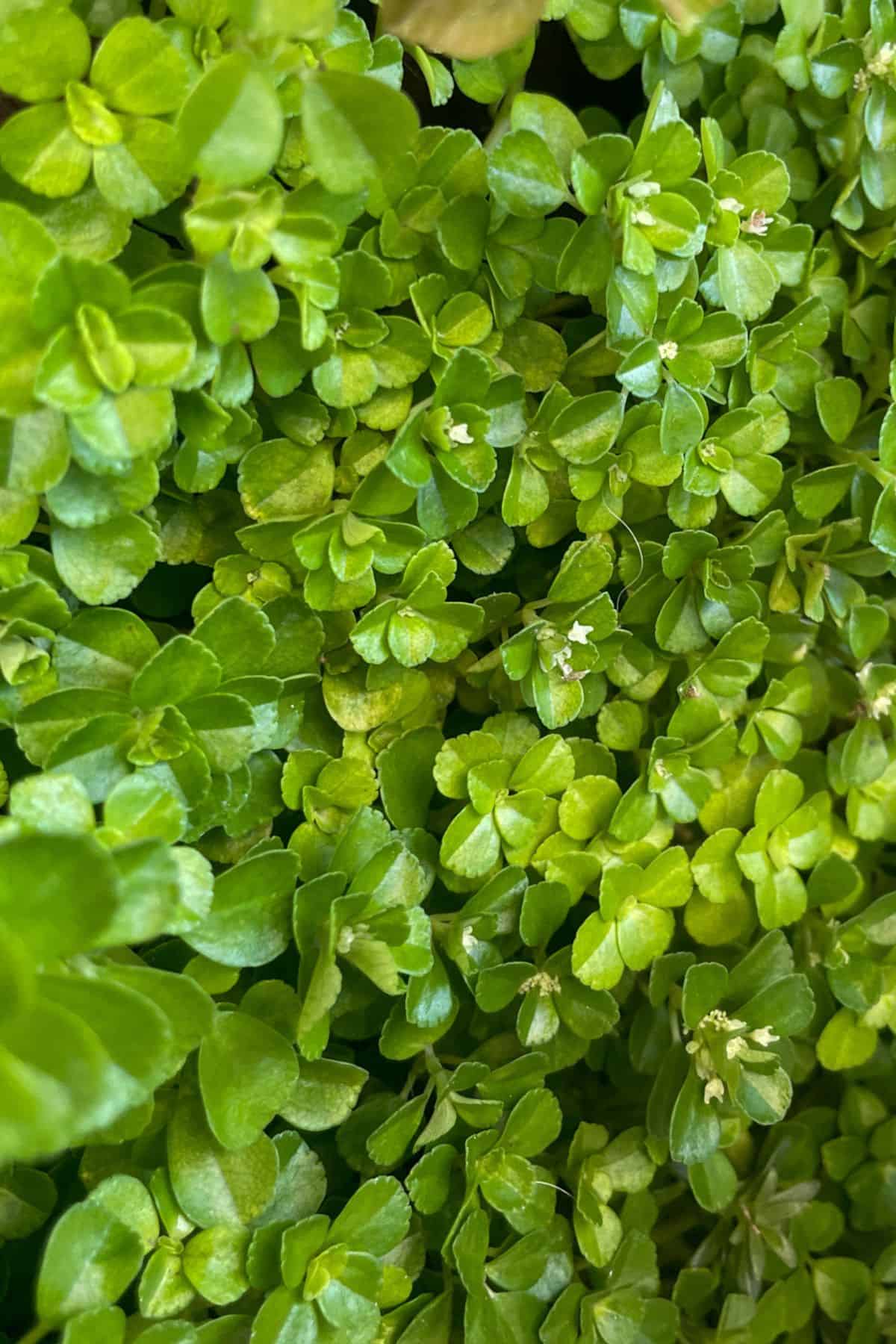
Pilea depressa 'Baby Tears' Care & Growing Guide Terrarium Tribe
During the day, 60 to 90% of humidity in the air is optimum for this species. During the night, this requirement ranges from 70 to 90%. Occasionally misting a Pilea Depressa baby tears is a good idea. Simply take a water spraying bottle and spray a generous amount on the plant's leaves. However, do make sure that the plant sits in moderate.
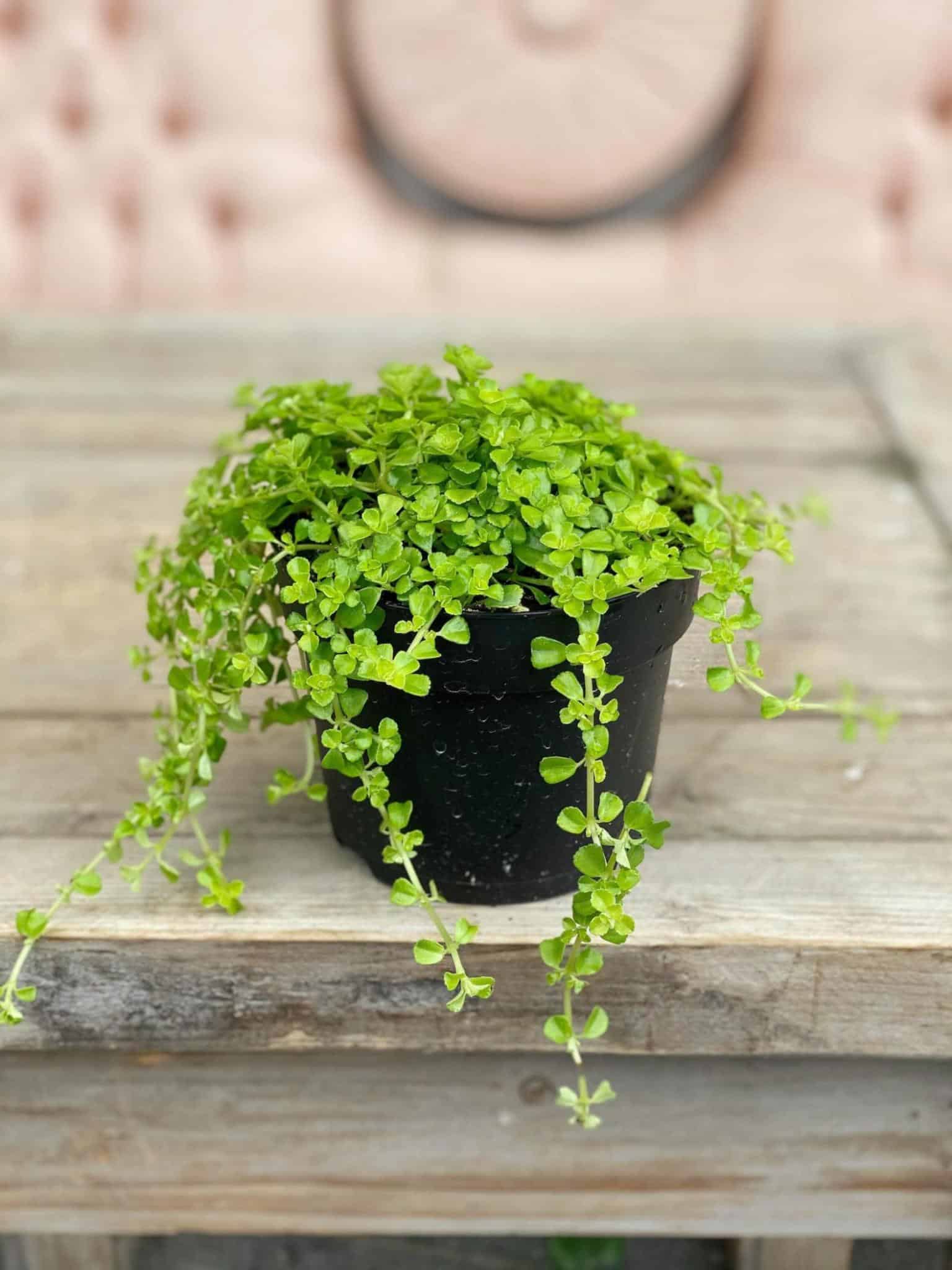
Pilea Depressa 'Baby Tears' The Watering Can Flower Market
Pilea Depressa (Latin name, meaning Depressed clearweed) is an evergreen creeper native to tropical South America. It boasts tiny green leaves with scalloped edges and greenish-pink stems. The Pilea Depressa grows well in hanging baskets, with foliage overflowing from its pot.
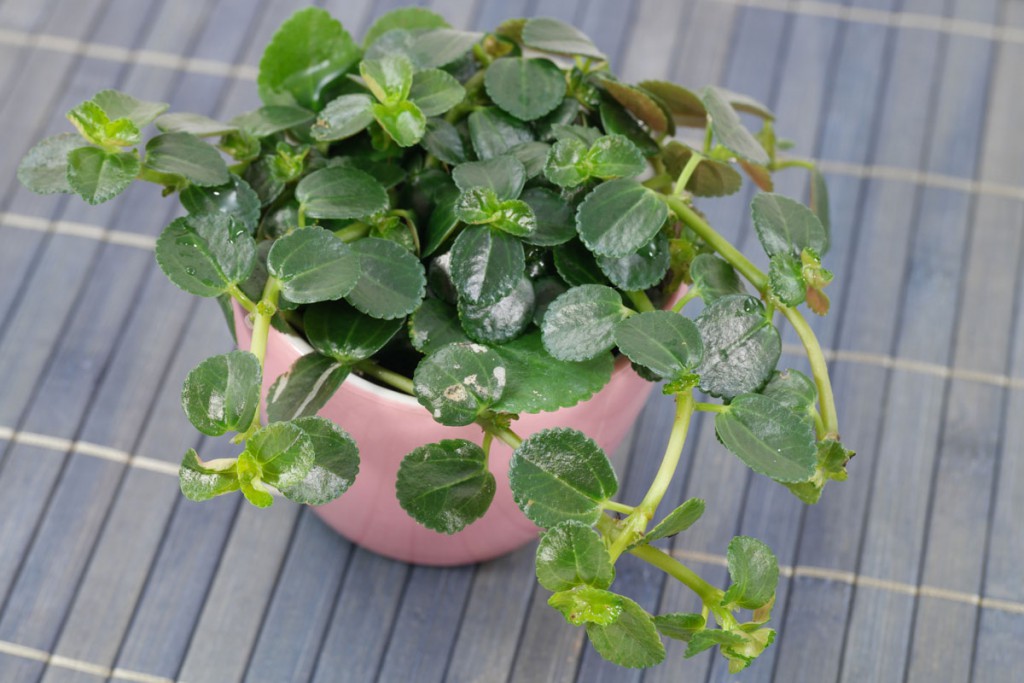
Kanonierblume (Pilea depressa)
Characteristics. Scientific Name and Common Names: Pilea depressa, also known as baby tears, angel's tear, Polyanna vine, Jacob's tear, Paddy's wig, depressed clearweed, or Corsican creeper Origin: Brazil and Mexico Indoor or Outdoor Plant: Is most suitable as a houseplant, but can be grown outdoors year-round in warm climates (USDA zones 10 through 12).
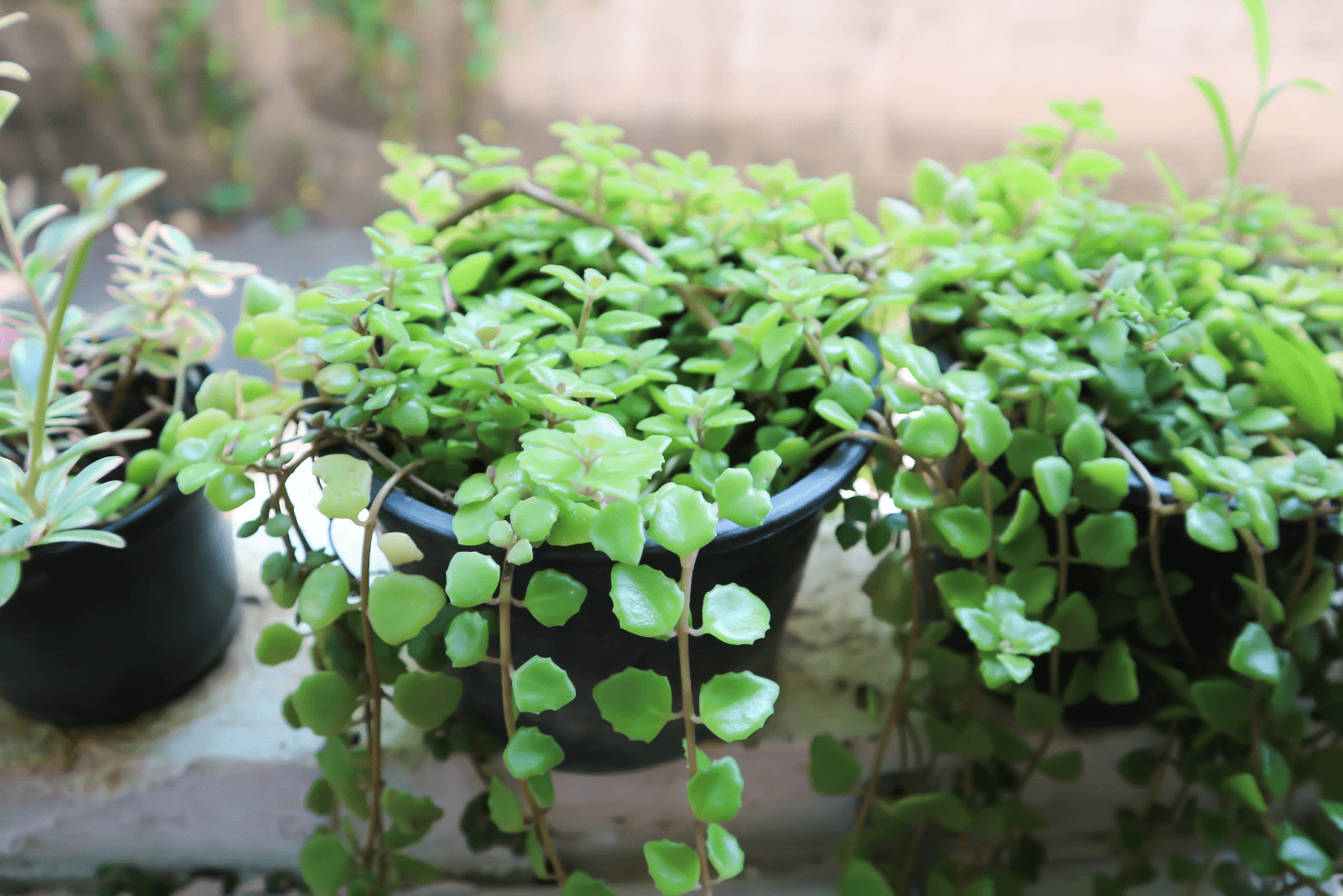
Pilea Depressa Features, Care, And Common Issues
Pilea depressa is an evergreen, miniature vine. The tiny, green, fleshy leaves with scalloped edges grow on thick pinkish stems. This plant makes excellent fairy gardens, terrariums, hanging baskets, and ground covers. The P.depressa 'baby tears' and the Baby Tears plant differentiate by the slightly large leaves and wavy edges of the former.

Pilea Depressa Care And Growing Guide Constant Delights
Light Light can be used to alter the plant's growth patterns to fit the aesthetic you're looking for. Heavily filtered or low light can cause the plant to grow "leggy", which normally isn't ideal for most plants; however, due to the compact nature of baby tears, it can look rather nice.
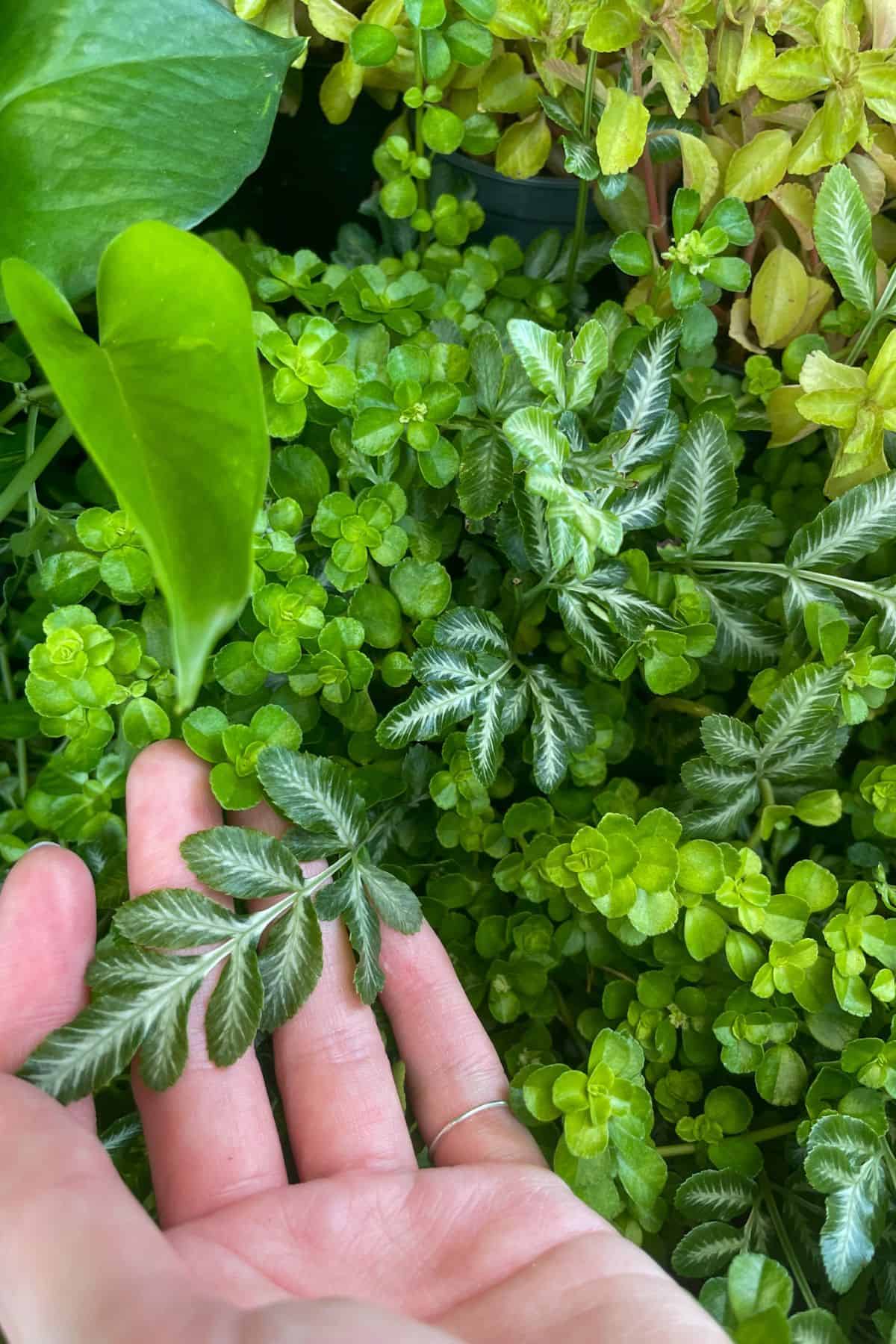
Pilea depressa 'Baby Tears' Care & Growing Guide Terrarium Tribe
Cultivation. Grow in standard houseplant compost in bright, indirect light, with high humidity and protection from draughts. Water moderately during the growing season and apply a balanced liquid feed every month; water sparingly in winter. See Pilea and houseplant cultivation for further advice.
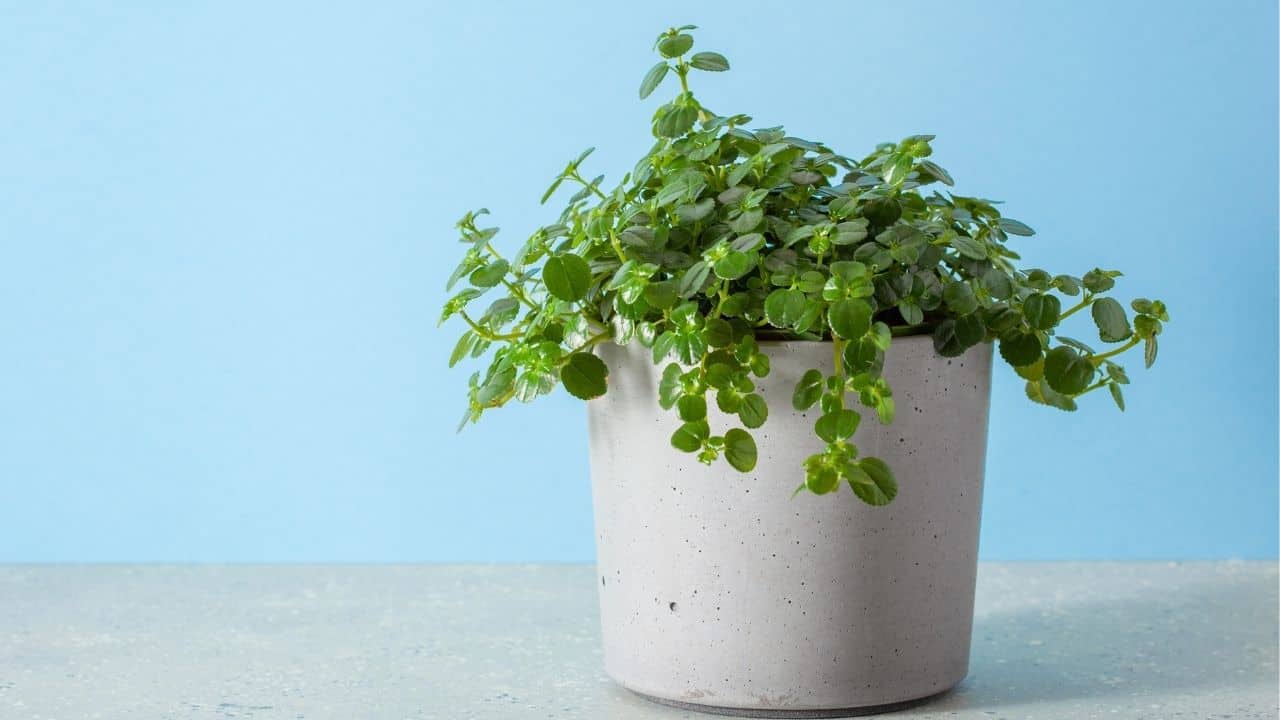
Pilea Depressa Care from Start to Finish Plantophiles Blog
The Pilea depressa grows excellent as a climbing plant, vine, or a groundcover. Additionally, the plant is relatively easy to maintain, and proper care gives you stunning foliage that will adorn your home. Today, we'll discuss the Pilea depressa, including its outdoor and indoor care, propagation, and potential issues.
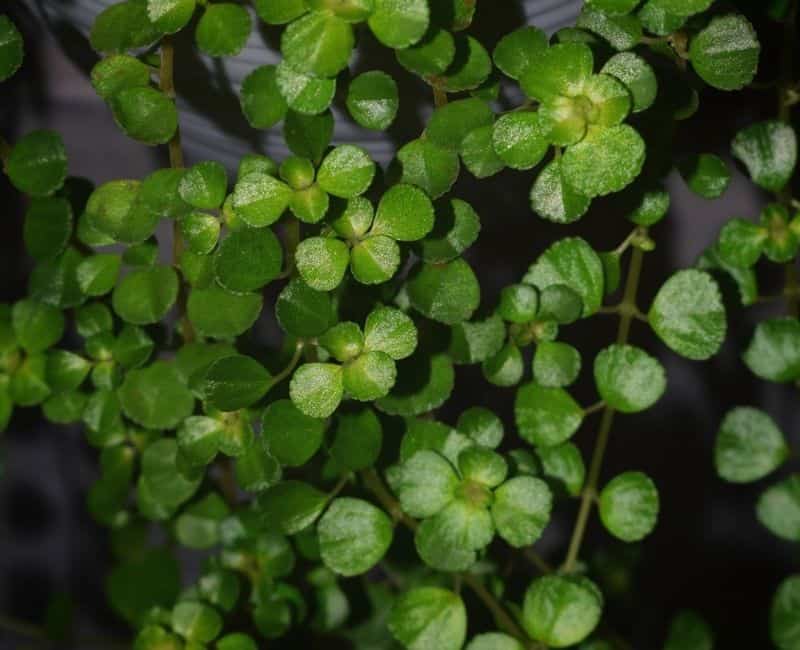
Pilea Depressa Care Guide Plant Grow Propagate
The beauty of a plant in the house is the green coloring. With Pilea Depressa, you are assured of evergreen foliage any time of the year. Height. Pilea Depressa is a low growing plant. The plant grows as tall as 10cm and as broad as 5cm. For a mature Pilea Depressa, the height can go from 50cm to 100cm high and spread to around 40cm wide.

Pilea depressa 'Baby Tears' Care & Growing Guide Terrarium Tribe
Soil Watering How often should you mist the Pilea plant? Fertilizing Temperature Sunlight Pruning Pilea depressa Plant Care Tips & Tricks Why are your Pilea leaves falling off? Do Pilea depressa bloom flowers? Can you use baby's tear for a terrarium? Is Pilea depressa Toxic to cats? Where to buy Pilea depressa? What is Pilea Depressa?
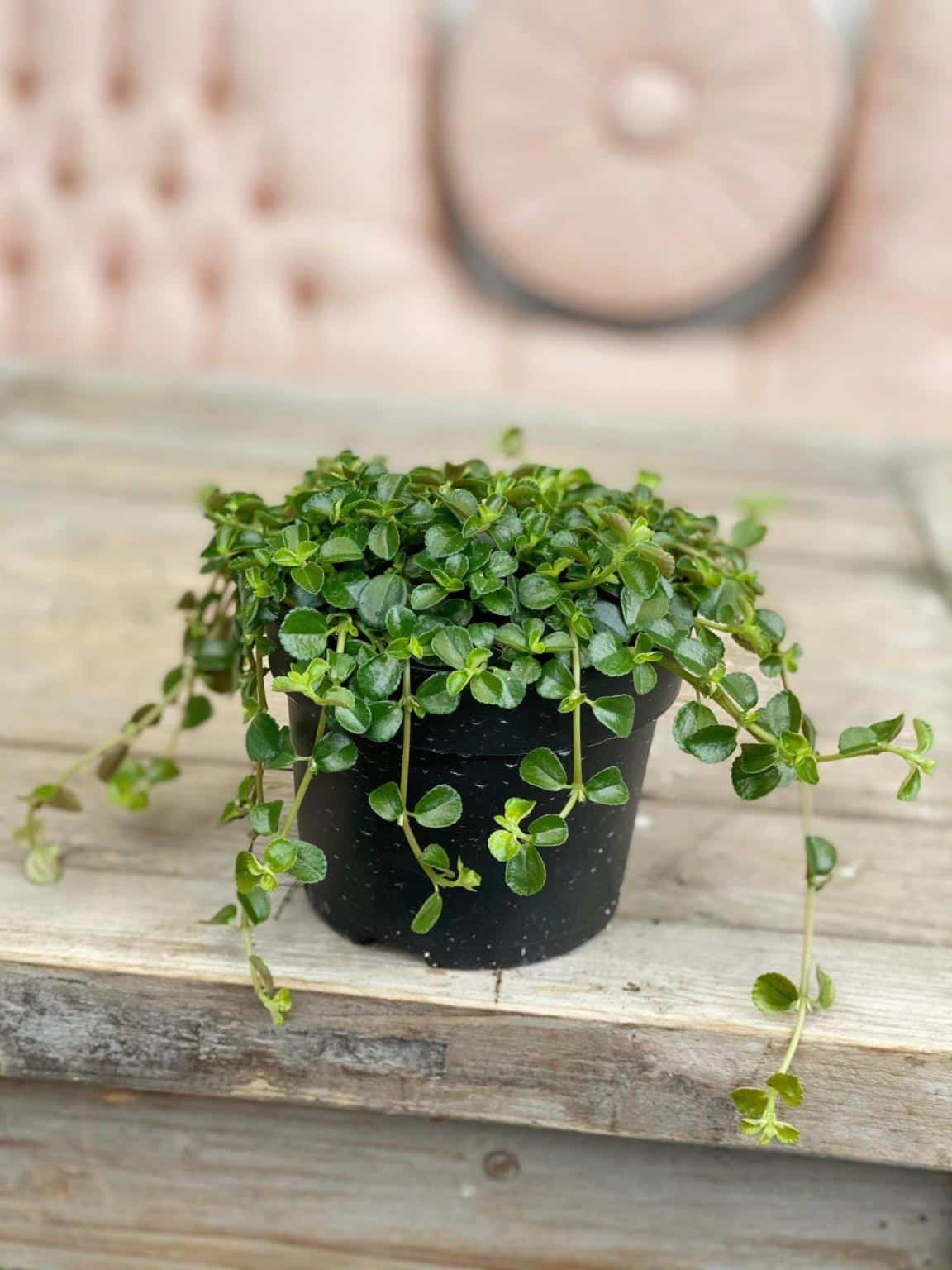
Pilea Depressa 'Baby Tears' The Watering Can Flower Market
Temperature and Humidity. The ideal indoor temperature for pilea is between 65 and 75 degrees Fahrenheit. Keep the plant away from air conditioning vents and radiators because it is sensitive to both cold and hot air exposure. During the winter, place the plant away from vents that can blow extremely cold or hot air on it.
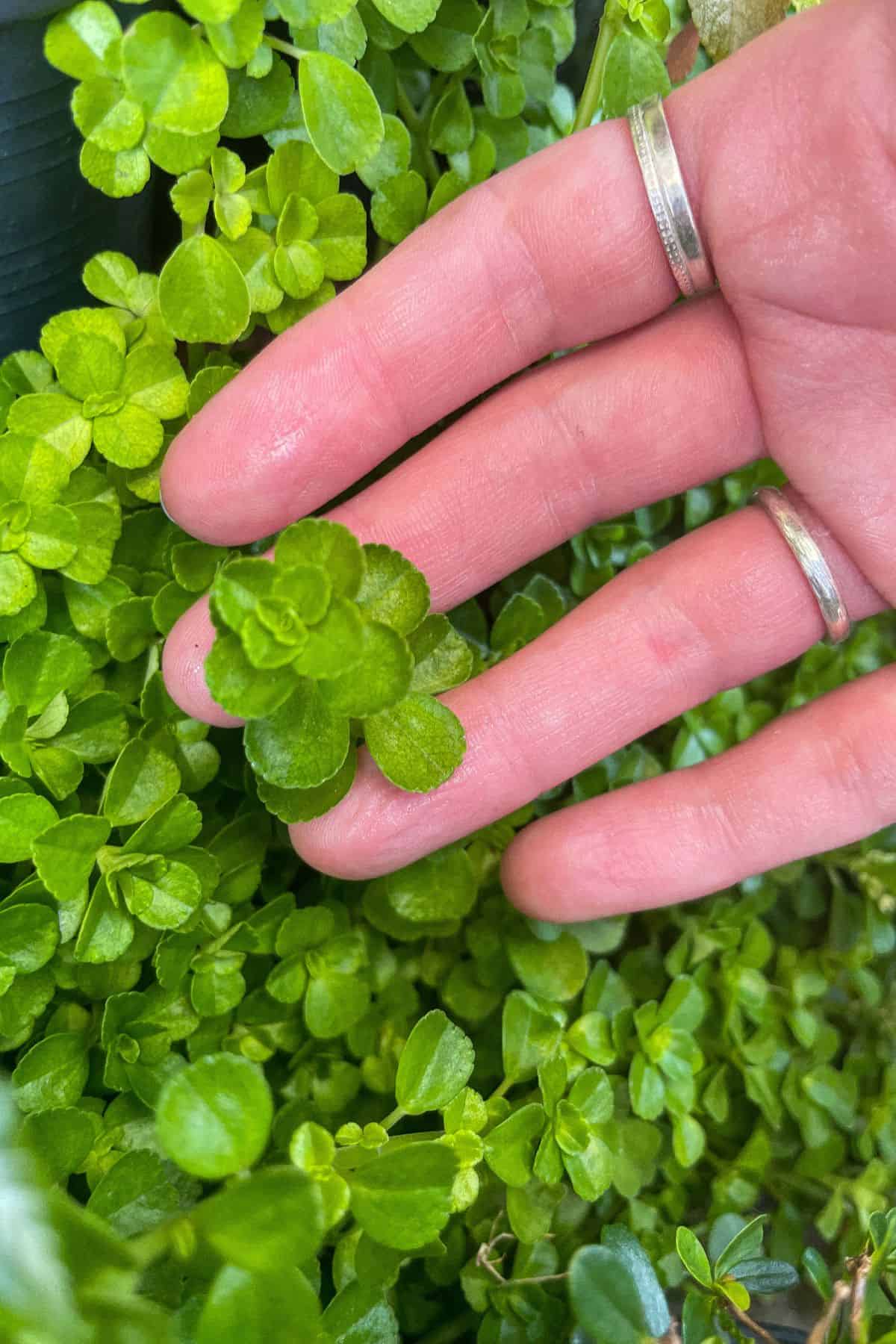
Pilea depressa 'Baby Tears' Care & Growing Guide Terrarium Tribe
Lighting Pilea depressa will grow in various lighting conditions, but an area that receives lots of bright, indirect light is optimal for growth. Under bright light, this plant will have a thick, prostrate (mat-forming) growth pattern, resulting in a healthy and vibrant look.

Care for Pilea Depressa Baby Tears How to Care and Grow It Garden Go Time
Light Conditions To ensure the perfect light level for this Pilea plant, we need to take into consideration its native habitat. Pilea depressa doesn't receive direct sunlight in the areas where it grows naturally. Large plants with massive leaves protect it from the intense sun rays. It only gets bright light, not direct!

Piléa depressa (Pilea depressa) entretien, arrosage, rempotage
Soil The Pilea Depressa requires mixed soil—but, that is, if you plan to pot them up and allow the tendrils to climb over the pot and hang around over it. However, if you decide to go the other way and mount the plant onto a mounting board, provided you give the right kind of support, your Pilea will grow as a beautiful climber!
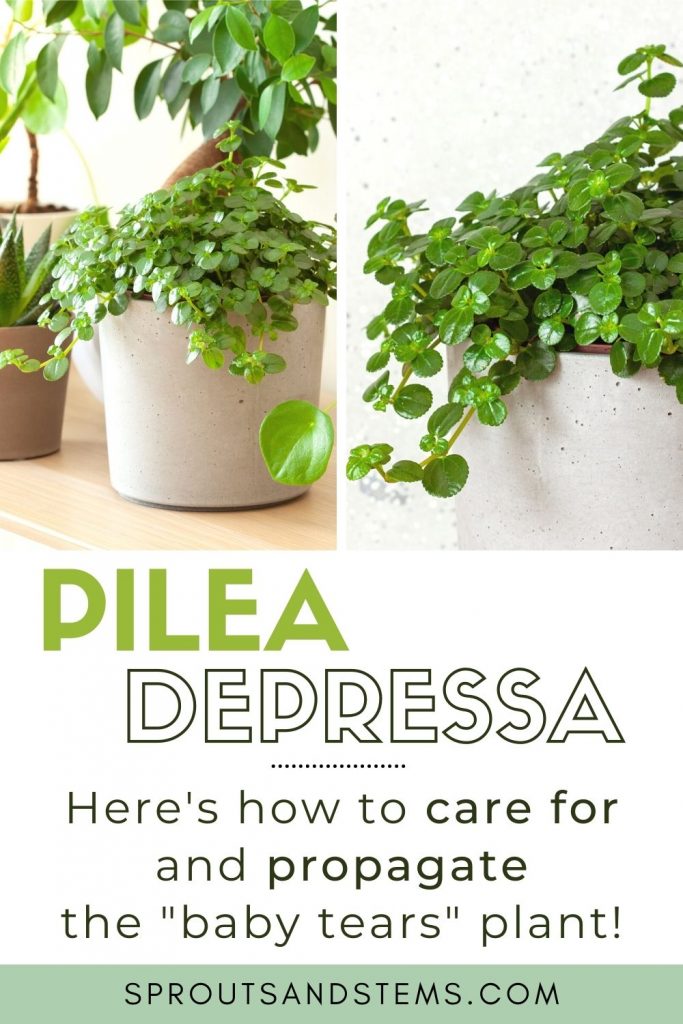
Pilea Depressa (Baby Tears) Care and Propagation Sprouts and Stems
Being native to tropical regions, Pilea Depressa enjoys warm temperatures between 65°F to 75°F (18°C to 24°C). Avoid exposing it to cold drafts or temperatures below 55°F (13°C). Pilea Depressa thrives in humid environments, so consider misting its foliage regularly or using a humidity tray. Soil and Potting
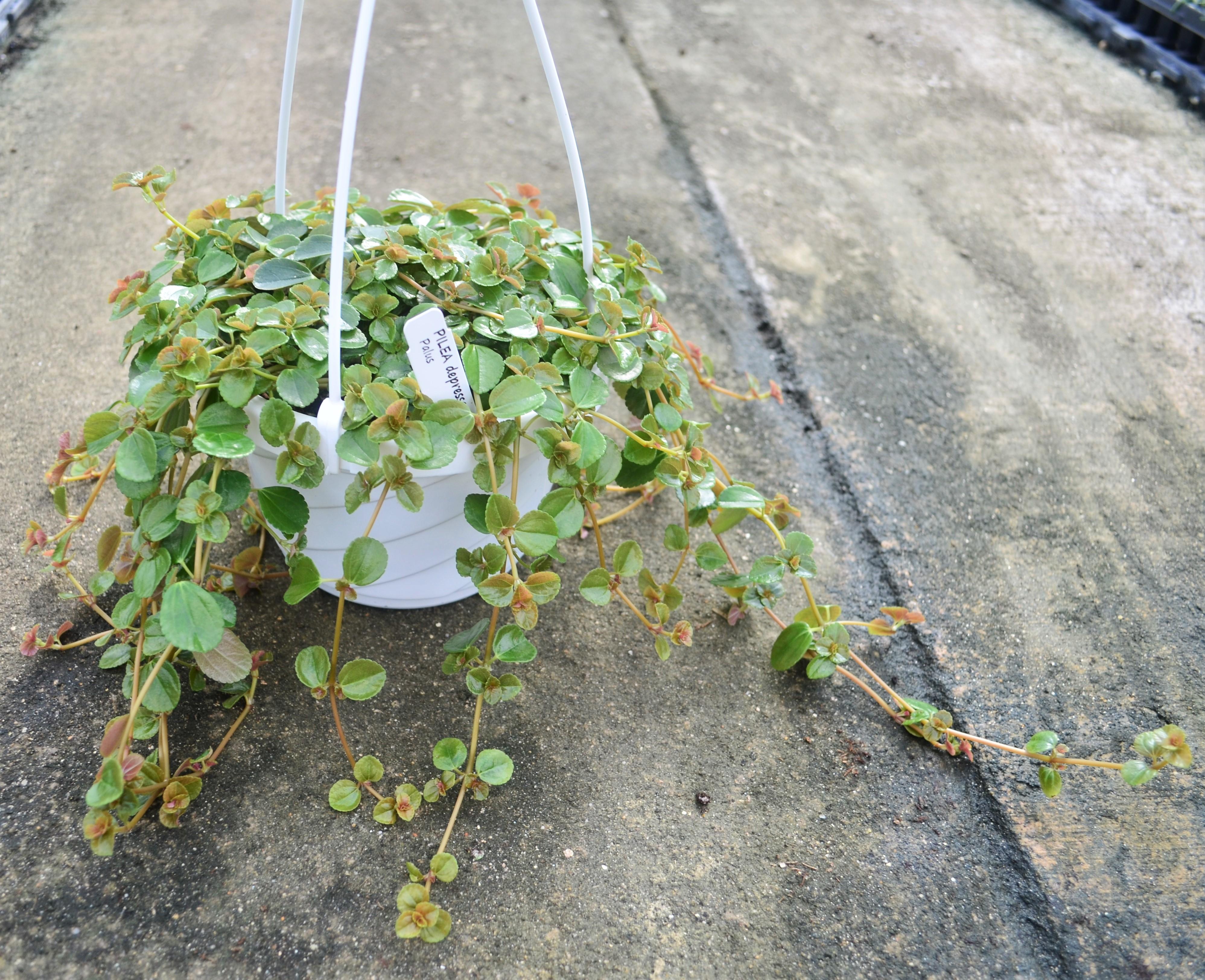
Pilea Pilea depressa Palus from Hillcrest Nursery
The Pilea depressa has the slightly unsettling nickname, Baby Tears, but it's a lovely vining plant. Pilea Baby Tears care is easy, as is expected from a Pilea. Give this beauty a good location, plenty of water and humidity, and leave it alone. Plant Details. Pilea depressa is a vining succulent native to Mexico. The thin stems are dotted.
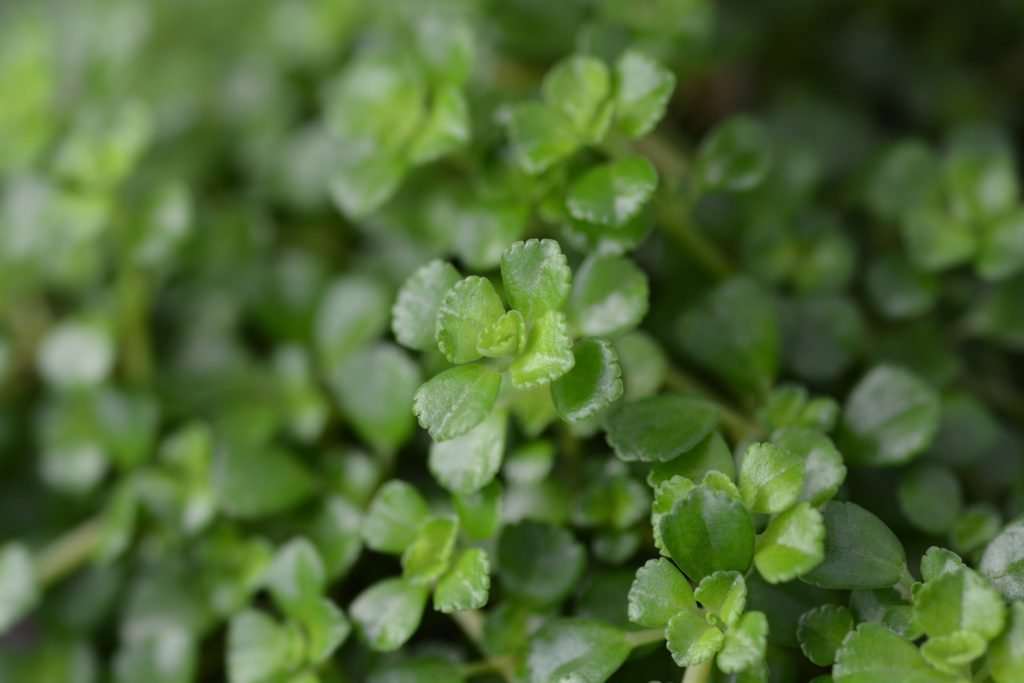
Pilea Depressa • Pflege & kaufen • mijnPlant.info
Pilea depressa, also known as depressed clearweed, is an excellent tropical plant for owners with animals or without.. This plant belongs to the Urticaceae family, and it thrives as a ground cover in an enclosure, adding vibrancy and texture. For novice keepers with a love for greenery, Pilea depressa is practically indestructible and requires very little maintenance to survive in an enclosure.